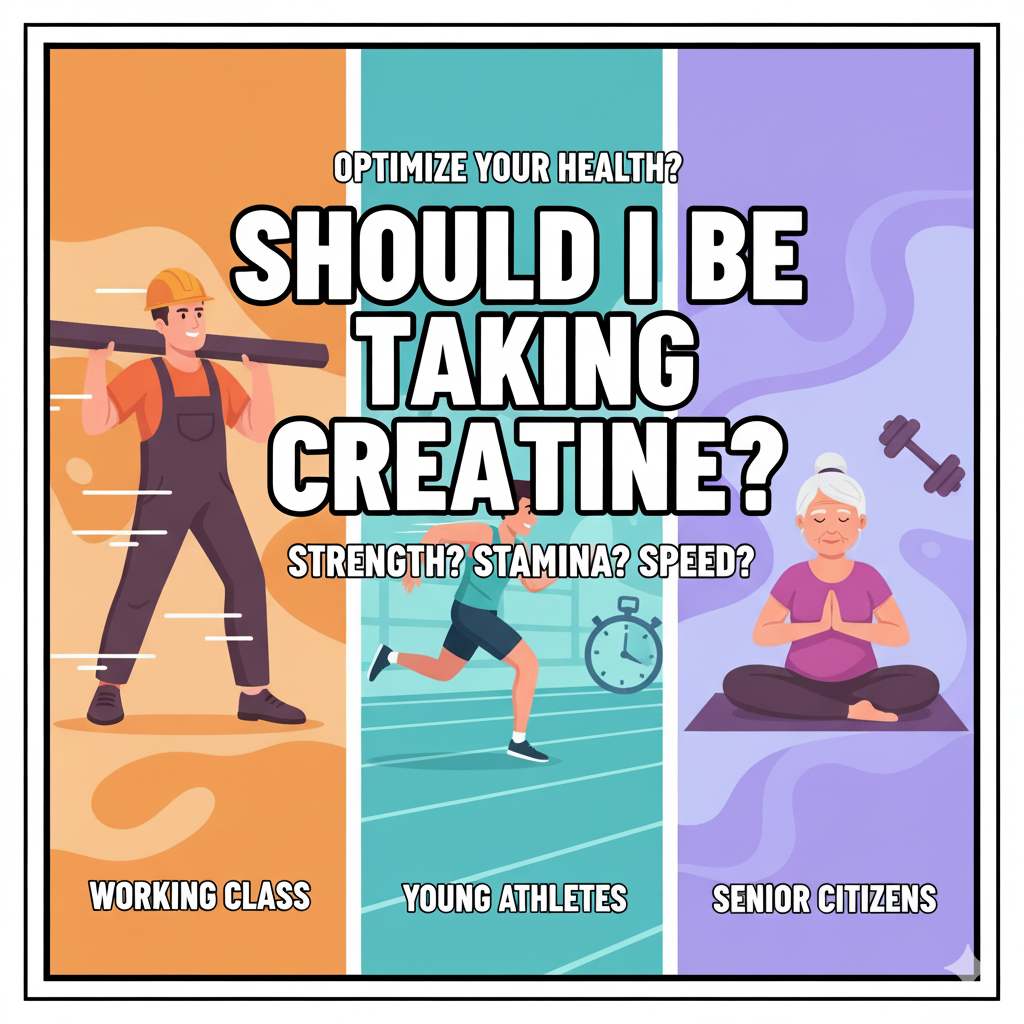
Should I Be Taking Creatine?
Creatine monohydrate is one of the most studied and effective supplements for enhancing physical performance and potentially improving health across various demographics. Its ability to optimize health stems from its crucial role in cellular energy production.
The Power of Creatine Monohydrate
Creatine is a naturally occurring compound found in muscle cells. It helps muscles produce energy during heavy lifting or high-intensity exercise. Supplementing with creatine monohydrate increases the body's stores of phosphocreatine, which is used to rapidly regenerate adenosine triphosphate (ATP)—the primary energy currency of the cell. This rapid energy supply is key to improving:
- Strength and power output.
- Muscle stamina during repeated bouts of exercise.
- Muscle growth (hypertrophy).
- Cognitive function in some populations.
Daily Creatine Intake: Justification for 5 to 10g
While the standard maintenance dose is often cited as 5g to 9g per day, consuming a slightly higher dose, specifically between 10g to 12g of creatine daily, can be beneficial for certain individuals.
- Higher Body Mass/Muscle Mass: Individuals with a greater amount of muscle mass or higher total body weight may require a higher dose to fully saturate their muscle stores.
- Faster Saturation: While not necessary for everyone, a slightly higher consistent dose ensures faster and more complete muscle saturation, especially for those who skip a loading phase.
- Increased Bioavailability: Consuming up to 15g daily can ensure that better health benefits are maximized, accounting for variations in absorption and utilization.
- Enhanced Benefits for Higher Activity: People engaged in intense daily activities, such as heavy manual labor or competitive sports, may benefit from the upper range of 8g daily to aid recovery and maintain high energy reserves.
Creatine for Different Demographics
Creatine’s utility extends far beyond traditional bodybuilding, offering tangible better health benefits for a diverse population.
Working Class People 🏗️
Many working-class jobs, such as construction, nursing, or factory work, demand high levels of physical exertion and stamina.
- Scenario: A construction worker spends their day lifting heavy materials and performing physically demanding tasks.
- Benefit: Creatine helps maintain stamina and strength throughout a long shift, reducing fatigue and potentially decreasing the risk of injury due to exhaustion. It also supports faster recovery from the daily physical strain, enabling them to be more consistent and productive.
Young Athletes 🏃♀️
For young athletes focused on competitive sports, creatine is a proven ergogenic aid.
- Scenario: A track athlete aiming to improve their running time, or a basketball player needing to increase their vertical jump.
- Benefit: Creatine directly improves short-burst power movements, translating to increased speed and explosive strength. It is highly effective for sports that involve intermittent high-intensity activities. Pairing it with a consistent strength training regime maximizes muscle and power gains, offering a competitive edge.
Senior Citizens 🧘♂️
As people age, they naturally lose muscle mass (sarcopenia), which impacts mobility and quality of life. Creatine is a powerful tool to combat this.
- Scenario: A senior citizen who wants to maintain independence, improve balance, and participate in low-impact activities like pilates or yoga.
- Benefit: Even without intense strength training, creatine consumption helps preserve existing muscle mass and enhances the results of light to moderate exercise. Studies show it can improve muscle function and bone density. Furthermore, its benefits to cognitive function may provide additional support for overall better health and longevity.
